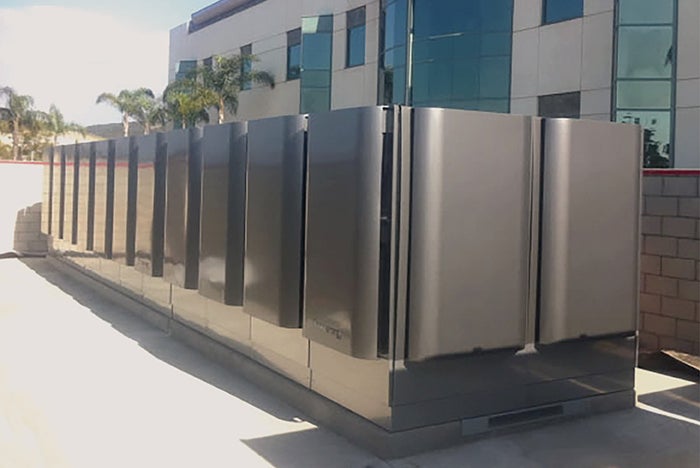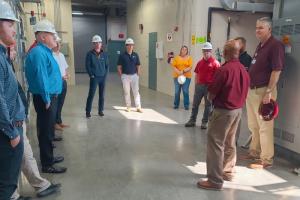Kaiser invests in tech, research to break climate change barriers

Fuel cells are used at the Kaiser Permanente San Marcos Medical Center as a reliable source of back-up power that can also be used for normal operations.
Image courtesy of Kaiser Permanente
Kaiser Permanente has been known for its sustainability leadership for more than a decade. The health system, with facilities in eight states and the District of Columbia, is constantly setting, hitting and then resetting new goals to advance its environmental stewardship mission.
Its latest goals? Achieve net-zero emissions across its portfolio by 2050 and cut its Scope 3 emissions in half by 2030. These new aims come just a few years after Kaiser succeeded in 2020 in claiming carbon-neutral status, the first health system in the U.S. to do so.
The organization says its sustainability commitments align with its greater mission to protect patients’ health.
“As severe wildfires, heat waves and flooding have devastated communities across the U.S. in recent months, it’s clear the health impacts of climate change are happening now and are disproportionately impacting our most vulnerable groups,” says Seema Wadhwa, executive director of environmental stewardship for Kaiser Permanente. “These events demonstrate the increasing urgency to address climate change as an issue of health and health equity.”
Kaiser’s own fight against climate change began with an inward look. Across its facilities, the organization has invested in environmentally sustainable technologies, infrastructure and processes to reduce its emissions.
In 2018, the health system installed a renewable microgrid atop its Richmond (Calif.) Medical Center parking structure for its emergency power and is looking into using microgrids and fuel cells at more facilities. It also generates clean energy with on-site solar infrastructure at more than 100 of its facilities. Across its Northern California portfolio, Kaiser adopted a policy to use anesthesia gases that produce less pollution. Around 3% of the system’s greenhouse gas emissions come from medical gases.
Last fall, the system opened the LEED Platinum San Marcos (Calif.) Medical Center, which boasts green features such as using reclaimed water for landscaping and cooling towers. The hospital’s lighting system is powered by a direct current LED system, and the building envelope materials were selected based on thermal ratings to help reduce demand on its heating, ventilating and cooling system.
All these efforts set the groundwork for Kaiser to reach its net-zero emissions and Scope 3 emissions reduction goals by 2050 and 2030, respectively.
The system worked with a third-party partner to evaluate the feasibility of decarbonizing its Scope 3 supply chain emissions while continuing to decarbonize Scope 1 and Scope 2 operational emissions.
“We have already developed a robust Scope 3 inventory, which helps serve as a roadmap of where our emissions are coming from, allowing us to focus on areas of greatest impact,” Wadhwa says. “A significant portion of our Scope 3 emissions comes from our supply chain … meaning we don’t have direct control over them. While we don’t have direct control, we do have the power to leverage our influence to drive change.”
Kaiser has teamed with several organizations, including Health Care Without Harm, the Sustainable Purchasing Leadership Council, peer health systems and other influencers to drive collective action in the health care supply chain forward.
Another way the system is looking beyond the walls of its facilities to advance environmental stewardship is through research.
Kaiser awarded a research grant last fall to the National Academy of Medicine (NAM) to spend nine months on a threefold sustainability initiative: develop an inventory of existing research evidencing the relationship between climate and health, identify gaps and opportunities to conduct further research, and create a public resource to help communities, policymakers and others pursue effective climate change solutions.
“It is undeniable that climate change is impacting health, and we need to act now,” says Victor Dzau, president of the NAM. “We have an opportunity to better understand these impacts, accelerate the development of effective strategies and safeguard the well-being of our most vulnerable populations in a changing climate.”
NAM’s research initiative is ongoing, and Wadhwa says there will be more information to share in the coming months that will add to the vast resources available to health care and other organizations.
“There are plenty of opportunities, resources and potential federal and state-level grants out there that can allow even the smallest business to be a better steward of their resources and reduce their carbon footprint,” Wadhwa says.




